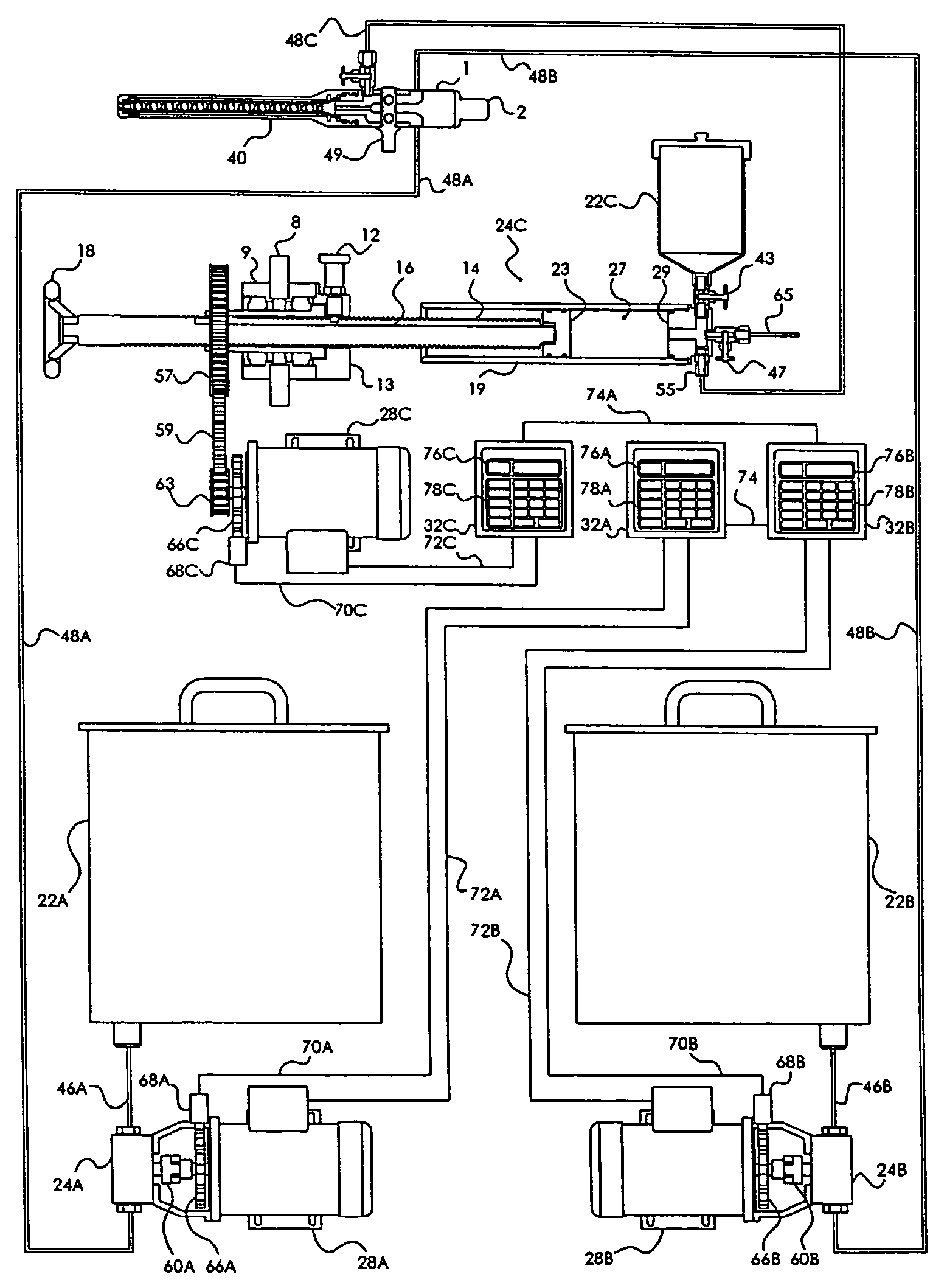Third stream automotive color injection
a technology of automotive color injection and third-stream, applied in the direction of liquid/fluent solid measurement, volume measurement, open-closed container, etc., can solve the problems of not achieving the desired reaction between polyurethane and polyurethane, incompatible with many standard colorants, and formulated colorants have the disadvantage of being difficult to us
- Summary
- Abstract
- Description
- Claims
- Application Information
AI Technical Summary
Benefits of technology
Problems solved by technology
Method used
Image
Examples
example 1
[0049]To illustrate, the color component may be automotive paint keyed to Ford Motor Corp.™ (paint code Harvest Gold Metallic B2 / B5) supplied by PPG Industries, Inc.™, matching code number BC5478, consisting of the following mix formula:[0050]D740 15.2[0051]D753 1.8[0052]D750 5.7[0053]D759 20.3[0054]D745 38.0[0055]D953 417.5[0056]D768 515.2
[0057]Please note that for the purpose of this example BASF™ or DuPont™ or Sherwin Williams™ would each have their own cross-reference to the Ford paint code and to PPG and to each other's codes to achieve an equal paint color match.
[0058]The two polymerizing components may be the two-component system manufactured by Foam Seal Inc. as “Polyurethane Spray Elastomer System” (part number V8101 / FSA29). The first component (Polyol or Resin) corresponds to part number V8101. The second component (Isocyanate or Prepolymer) corresponds to part number FSA29. The components would be mixed in the ratio FSA29 / V8101, parts by volume 58.6 / 100.0.
[0059]Turning to...
PUM
| Property | Measurement | Unit |
|---|---|---|
| Viscosity | aaaaa | aaaaa |
| Volume | aaaaa | aaaaa |
Abstract
Description
Claims
Application Information
 Login to View More
Login to View More - R&D
- Intellectual Property
- Life Sciences
- Materials
- Tech Scout
- Unparalleled Data Quality
- Higher Quality Content
- 60% Fewer Hallucinations
Browse by: Latest US Patents, China's latest patents, Technical Efficacy Thesaurus, Application Domain, Technology Topic, Popular Technical Reports.
© 2025 PatSnap. All rights reserved.Legal|Privacy policy|Modern Slavery Act Transparency Statement|Sitemap|About US| Contact US: help@patsnap.com



